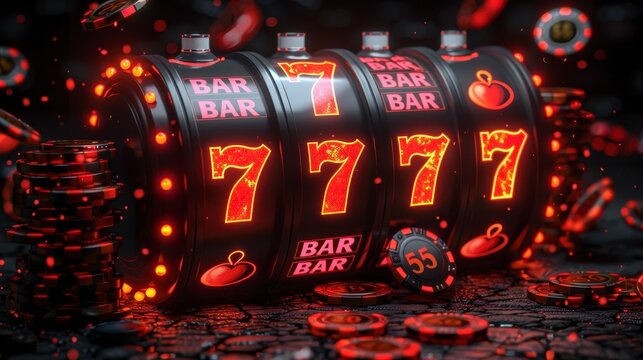Randomness in Slots: PRNG & Audits. Random Facts
When you spin the reels at an online casino, you’re placing your trust in technology that determines every outcome through complex mathematical algorithms. The gaming industry relies on sophisticated systems to ensure fairness, transparency, and genuine unpredictability in every game session. Understanding how these mechanisms work empowers players to make informed decisions and recognize legitimate gaming platforms from questionable operators.
Some players mistakenly compare slot algorithms to a simple random word generator, but gaming systems are far more complex.
🔐 Security fact: Modern slot RNG systems generate thousands of number sequences per second, even when no one is playing. This continuous operation ensures that the exact moment you press “spin” determines your outcome, making timing-based prediction impossible.
Fundamentals of PRNG in slot games
Modern slot machines operate on principles vastly different from their mechanical ancestors. The lever-pulling, gear-spinning contraptions of the past have evolved into digital experiences powered by mathematical formulas. At the heart of every contemporary slot game lies a computational system designed to generate outcomes that cannot be predicted or manipulated by players or operators. See how Randomness ensures every spin is fair and unpredictable.
How pseudo-random number generators work
A pseudo-random number generator serves as the engine behind every spin result. This sophisticated algorithm produces numerical sequences that appear completely unpredictable, even though they follow predetermined mathematical formulas. The process begins with an initial value called a seed, which the system uses to calculate subsequent numbers in the sequence. Each calculation happens so rapidly that human perception cannot track the progression.
⚡ Technical insight: Modern PRNGs can generate over 1 billion random numbers per second. Even if you could press the spin button twice within a millisecond, you’d receive completely different outcomes because hundreds of thousands of numbers would have been generated between those spins.
Role of PRNG in determining outcomes
Every element of slot gameplay depends on the random number generator output. When you press the spin button, the system captures the current value from the continuously running algorithm. This number determines where each reel will stop, which symbols will appear on paylines, and whether you’ve triggered bonus features. The entire process completes in fractions of a second, creating the illusion that reels are physically spinning when they’re actually displaying predetermined results.
The generator’s influence extends beyond basic reel positions. Modern slots incorporate multiple game layers, including:
• Base game symbol placement across all visible positions
• Bonus round triggering mechanisms and their specific features
• Free spin quantities when scatter symbols activate special modes
• Multiplier values that enhance winning combinations
• Progressive jackpot contribution calculations
Each aspect relies on separate numerical outputs from the generator, ensuring comprehensive unpredictability throughout the gaming experience. The software maps specific number ranges to different outcomes, maintaining the intended probability distribution that defines the game’s mathematical model. This mapping ensures that advertised return-to-player percentages accurately reflect long-term performance.
🎯 Example mapping: A slot with a 1-in-10,000 jackpot chance might assign numbers 1-10 to the jackpot outcome from a range of 1-100,000. When the RNG generates any number within that range, you win the jackpot. Other ranges correspond to different winning combinations or losses.
Limitations and misconceptions
Despite their sophistication, pseudo-random systems have inherent characteristics that players should understand. The most significant limitation involves their deterministic nature—these algorithms don’t produce true randomness in the philosophical or quantum mechanical sense. If someone possessed complete knowledge of the seed value and the formula, they could theoretically predict the sequence. Gaming operators protect against this vulnerability through secure seeding practices and regular algorithm updates. Unlike a basic random word generator used for creative writing, slot machines employ sophisticated mathematical formulas designed specifically for gambling applications.
🛡️ Security layers: Licensed casinos use multiple protection methods including 128-bit or 256-bit encryption for seed values, server-side generation isolated from player access, and frequent seed refreshing (sometimes every few milliseconds). These measures make practical exploitation impossible even for sophisticated attackers.
Seeding and auditing in iGaming
The integrity of online gambling depends on robust verification processes that extend far beyond the basic algorithms. Regulatory frameworks worldwide mandate strict oversight to protect players from manipulation and ensure advertised odds match actual performance. These protective measures involve both the technical implementation of randomness and independent examination by specialized testing laboratories. Players should understand that slot RNG systems work differently from a random object generator, as they must maintain specific probability distributions and payout structures.
How seeding influences randomness
The seeding process determines the starting point for every number sequence generation. Think of it as the initial spark that sets the entire computational chain in motion. Without secure seeding practices, even the most sophisticated algorithm becomes vulnerable to prediction and exploitation. Modern systems employ multiple entropy sources to create seed values that change constantly and unpredictably.
Random facts about slot technology reveal that modern games can process thousands of calculations per second.
🌡️ Entropy sources: Modern RNG seeding draws from multiple unpredictable inputs: system clock timestamps down to nanoseconds, server temperature fluctuations, network traffic patterns, mouse movements, keyboard timings, and even atmospheric noise. Combining these sources creates seeds that are practically impossible to predict or reproduce.
Importance of independent audits
Third-party testing laboratories serve as crucial gatekeepers in the gaming industry. These organizations specialize in examining game software, mathematical models, and operational systems to verify compliance with regulatory standards. Their certification provides players with assurance that games perform as advertised and that operators cannot manipulate outcomes to favor the house beyond stated parameters.
The auditing process involves comprehensive examination across multiple dimensions:
1. Mathematical model verification to confirm probability distributions match specifications
2. Software code review to identify potential vulnerabilities or manipulation vectors
3. Random number generator testing through statistical analysis of millions of outcomes
4. Payout percentage certification through extended gameplay simulations
5. Compliance verification with jurisdiction-specific regulatory requirements
Major testing laboratories maintain rigorous standards that exceed most regulatory minimums. Organizations like eCOGRA, iTech Labs, and Gaming Laboratories International have established reputations based on decades of thorough examination. Their seal of approval carries significant weight because they operate independently from both game developers and casino operators.
📊 Testing scale: A typical RNG certification involves running 10-100 million simulated spins and applying over 15 different statistical tests including chi-square analysis, frequency distribution checks, runs tests, and correlation analysis. The process can take 4-8 weeks and costs operators between $10,000-$60,000 per game.
Recognizing certified and verified games
Players can identify legitimate games through several visible indicators. Reputable operators display certification seals from recognized testing laboratories, typically in the website footer or game information sections. These seals should link to verifiable information on the certifying organization’s website, allowing players to confirm authenticity.
License information provides another critical verification layer. Jurisdictions like Malta, Gibraltar, and the UK maintain public databases where players can verify operator licenses and check for disciplinary actions. Games operating under these licenses must meet strict technical standards and undergo regular examination by approved testing facilities. Learning random facts about RNG systems helps players understand why perceived patterns don’t actually exist.
🔍 Verification checklist: Look for visible certification seals that are clickable and lead to the testing lab’s website, check for license numbers from recognized jurisdictions (UK, Malta, Gibraltar, Curacao), verify the operator appears in regulatory databases, and confirm that game info screens display RTP and volatility data.
Understanding perceived patterns
Human brains evolved to detect patterns as a survival mechanism, but this cognitive tendency creates challenges when engaging with truly unpredictable systems. Players frequently report observing cycles, hot and cold streaks, or time-based patterns in slot performance. Understanding why these perceptions arise—and why they don’t reflect underlying reality—helps maintain realistic expectations and prevents costly mistakes. One of the most surprising random facts about certification is that testing a single game can cost operators tens of thousands of dollars.
Why patterns are illusions
When you observe several consecutive wins or losses, your brain automatically searches for explanations. This pattern-seeking behavior served our ancestors well when predicting predator movements or weather changes, but it misleads us when analyzing random outcomes. The random wheel of fortune doesn’t favor patterns—it produces results through processes that guarantee no outcome influences subsequent spins.
Statistical clustering naturally occurs in genuinely unpredictable sequences. If you flip a fair coin one thousand times, you’ll inevitably encounter runs of multiple consecutive heads or tails. These clusters don’t indicate bias; they represent expected variation within random data. Similarly, slot sessions will include periods of frequent wins interspersed with losing streaks, all perfectly consistent with the programmed probability distribution.
🎲 Coin flip paradox: In 1,000 coin flips, there’s a 97% probability you’ll see at least one streak of 7 consecutive heads or tails. With 10,000 flips, you’ll almost certainly see streaks of 10 or more. These “improbable” clusters are actually mathematically expected in random sequences—the same principle applies to slot outcomes.
Short-term streaks vs long-term probability
Every slot game operates according to a fixed mathematical model that defines its long-term behavior. These models specify return-to-player percentages, hit frequency, volatility characteristics, and jackpot probabilities. However, these figures only manifest accurately over millions of spins. In any individual session, actual performance can deviate dramatically from expected averages.

Volatility describes how much short-term results fluctuate around long-term expectations. High volatility games deliver larger wins less frequently, creating extended losing periods punctuated by substantial payouts. Low volatility titles provide smaller wins more regularly, producing steadier bankroll changes. Neither approach alters the overall return percentage; they simply distribute outcomes differently across time.
Understanding variance helps contextualize personal experience. These figures illustrate why personal sessions rarely reflect advertised percentages. Random facts about probability show that even after 10,000 spins, individual results might vary by several percentage points from the theoretical return. Only casino-scale volumes of millions of aggregate spins across all players reveal the true mathematical model.
💡 Volatility example: A 96% RTP slot with high volatility might go 200 spins without a significant win, then deliver a 500x payout. A low volatility 96% RTP slot might give you small wins every 5-10 spins. Both return 96% long-term, but the journey feels completely different.
Avoiding misinterpretation of random results
Maintaining accurate perspectives about outcomes requires conscious effort against natural cognitive tendencies. The first step involves recognizing that your personal experience represents an infinitesimally small sample of the game’s total operational history. What seems like an impossible losing streak might be entirely expected given the game’s volatility profile.
Documentation practices help maintain objectivity. Recording session results over extended periods reveals patterns in your play rather than the game itself. You might discover that losses occur primarily during longer sessions when fatigue impairs judgment, or that specific games suit your risk tolerance better than others. This self-knowledge proves more valuable than any perceived machine pattern. These random facts about probability demonstrate why personal gaming sessions rarely match the advertised return-to-player percentages.
📝 Tracking tip: If you track 100 sessions, you’ll likely find your actual return varies between 70-120% of the stated RTP. This massive variation is normal. Only after tracking thousands of sessions would your results converge toward the advertised percentage—and most players never reach that volume.
Comparing hardware and software RNGs
The gaming industry employs two distinct approaches to generating unpredictable outcomes, each with unique characteristics and applications. Understanding these differences helps players appreciate the technology ensuring fairness across various gaming platforms. While both methods aim to produce unpredictable results, their implementation details vary significantly in terms of technical complexity, cost, and practical deployment.
Technological evolution has shifted most operations toward software-based solutions due to practical advantages in scalability and maintenance. However, hardware approaches maintain relevance in specific contexts where their unique properties provide advantages. The choice between methods often depends on regulatory requirements, operational scale, and the specific gaming environment.
Overview of hardware RNGs
Hardware random number generators produce unpredictability through physical processes rather than mathematical formulas. These devices measure natural phenomena that exhibit inherent unpredictability according to our current understanding of physics. Common approaches include sampling thermal noise from electronic circuits, timing radioactive decay events, or measuring quantum mechanical effects.
The primary advantage of hardware systems involves generating truly unpredictable outputs rather than pseudo-random sequences. Since physical processes produce the randomness rather than deterministic algorithms, no amount of computational power or mathematical analysis can predict future outputs based on past observations. This property makes hardware generators valuable in high-security applications where the highest level of unpredictability is required.
Physical generators typically cost significantly more than software implementations. The specialized components, manufacturing requirements, and maintenance needs create barriers to widespread deployment. Land-based casinos occasionally use hardware devices for high-stakes games or lottery systems where the investment justifies the enhanced security properties. However, the practical difficulties of integrating these devices into online platforms limit their use in internet gambling.
🔬 Quantum RNG: Some modern hardware RNGs use quantum mechanics, measuring photon behavior or electron tunneling. These devices exploit fundamental quantum uncertainty—the same principle that makes radioactive decay unpredictable. They’re used in national lotteries and high-security cryptography, but are too expensive for most casino applications.
Software-based RNG mechanisms
Software solutions dominate the online gaming industry due to their practical advantages in cost, scalability, and integration. These algorithms run on standard computing hardware without requiring specialized components, making them ideal for distributed online platforms serving thousands of simultaneous players. Modern cryptographic techniques have advanced software generation to levels where practical security matches hardware alternatives for gaming applications.
💻 Algorithm example: Many online casinos use the Mersenne Twister algorithm or cryptographic standards like SHA-256. These algorithms have been tested billions of times and pass all statistical randomness tests. The Mersenne Twister, for instance, has a period of 2^19937-1, meaning it won’t repeat for an astronomically long sequence.
Differences and implications for players
From a player’s perspective, the distinction between hardware and software generation rarely matters in licensed, regulated environments. Both approaches, when properly implemented and audited, provide equivalent fairness and unpredictability. The choice primarily affects operational considerations for operators rather than gaming outcomes for players.
Regulatory frameworks in major jurisdictions accept both methods, provided they meet specific technical standards and undergo appropriate certification. Testing laboratories evaluate each approach according to statistical criteria that measure unpredictability, independence, and absence of detectable patterns. Games certified through these processes offer equivalent fairness regardless of the underlying generation method.
The following characteristics distinguish the two approaches:
Software advantages:
• Lower implementation and maintenance costs
• Easy integration with online platforms
• Rapid generation supporting high transaction volumes
• Simple remote updates and parameter adjustments
• Minimal hardware requirements
Hardware advantages:
• Theoretical immunity to algorithmic prediction
• No dependence on seeding security
• Physical generation process visible in some implementations
• Potential psychological comfort for skeptical players
• True randomness rather than pseudo-random sequences
Practical gaming experiences remain indistinguishable between properly implemented systems. The random number produced by either method determines outcomes with equivalent fairness. Players should focus on operator licensing, game certification, and audit transparency rather than concerning themselves with generation methodology.
🎰 Bottom line: Whether a slot uses hardware or software RNG doesn’t affect your chances of winning. Both methods, when certified by reputable labs, provide identical fairness. Focus instead on RTP percentages, volatility ratings, and whether the casino holds a valid license from a respected jurisdiction.
🏅 Player protection tip: Always verify three things before playing: visible certification seals from known testing labs, a valid license number from a regulated jurisdiction, and published RTP information in the game’s help screen. These indicators matter far more than whether the RNG uses hardware or software.









